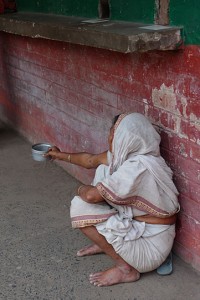The Rise and Fall of Calcutta
 For many Westerners, Calcutta (now Kolkata) has been synonymous with poverty and Mother Teresa. But there is much more to Calcutta than slums and charity.
For many Westerners, Calcutta (now Kolkata) has been synonymous with poverty and Mother Teresa. But there is much more to Calcutta than slums and charity.
Drugs, for one.
In the early 17th century, the Indian Mughal emperor Jahangir granted the British East India Company the right to build a trading post in Surat (western India) in exchange for goods from European markets. This was soon followed by rights to posts in Madras, Bombay, and in 1690, to the banks of the Hooghly River near a small Bengali village named Kalikata.
The Company built Fort William next to Kalikata in 1702, and the city that grew around it became known as Calcutta. As the Company’s trade in cotton, silk, dyes, saltpetre, tea and spices grew, so did the city.
But it was the rise of the opium trade that truly led to Calcutta’s meteoric rise in prosperity and importance, leading it in 1772 to be named the capital city of British India, encompassing all of today’s India, Pakistan and Bangladesh
After the British wrestled full control of Bengal from the Mughals in 1757, fields of rice were converted to fields of poppy, and Calcutta became the major clearinghouse for the opium trade. From Calcutta the opium was smuggled on British ships to China, feeding a growing demand for the drug, the ships returning with the prized Chinese goods of tea, silk and porcelain.
With the opium trade eventually reaching some 1,400 tons per year, Calcutta flourished, the British prospered, and by the early 19th century Calcutta was known as “The City of Palaces.”
But the high of drugs is not indefinite, and Calcutta also fell victim to the withdrawal pains of the fall of the opium trade (despite two wars with China that Britain fought to maintain it). Delhi took over as the seat of Indian government in the 20th century, and Bombay soon replaced Calcutta as the main commercial hub. To add to its loss, overcrowding, poverty, and Hindu-Muslim religious violence also plagued the city as independent India and Bangladesh were formed.
Today, though, it is a city once again on the rise. Mother Teresa and other relief organizations have brought help and international awareness to the city, but it is its burgeoning IT enterprise that is now rapidly lifting the city into greater prosperity, perhaps one day to reclaim its past glories and accolades. Without the opium high.
 Click to subscribe via RSS feed
Click to subscribe via RSS feed
